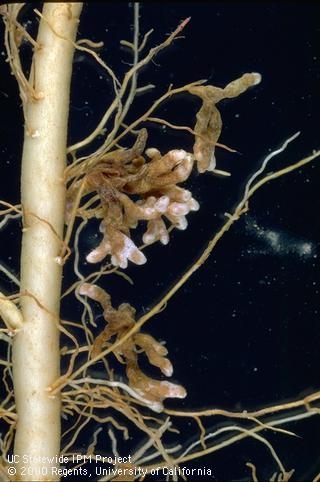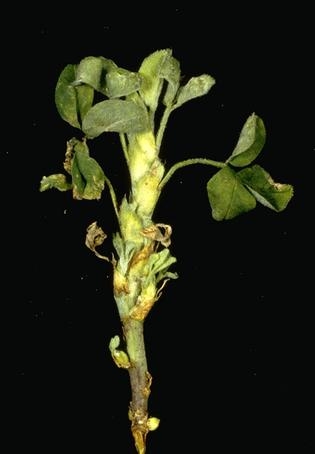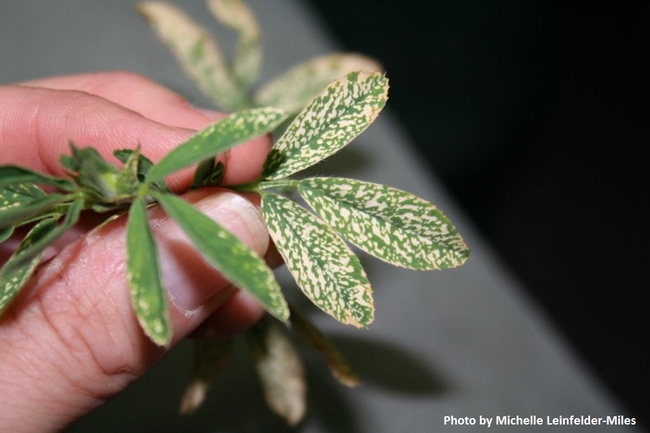Lately, I have been corresponding with growers and consultants about slow spring growth in their alfalfa fields. There are several reasons why growth may resume slowly this spring. I describe them below and discuss some way we may be able to manage for them.
Figure 1. Root nodules containing nitrogen fixing bacteria.
Dormancy. I think we have a tendency to look over the figurative fence at neighboring fields and make comparisons. Keep in mind that the dormancy rating of a variety will have an influence on whether the field “wakes up” early in the season or tends to start growing a little bit later.
Figure 2. Shortened internodes and swollen buds of alfalfa with stem nematode.
Nutrients. Nutrient management involves complex decision making and an understanding of agronomy, soils, and economics! When commodity prices are low, it can be hard to justify input expenses, but keep in mind that alfalfa is a perennial crop with perennial nutrient needs for maintaining yield and quality. Fall is the best season for addressing alfalfa fertilizer needs, particularly phosphorus (P) and potassium (K). There are soils in this region, especially in the Delta, that are low in K. We suggest soil sampling in the fall to gain an understanding for nutrient availability and then, as needed, applying fertilizer between October and February because it could take 60-90 days for the crop to fully respond to fertilizer application.
Figure. 3. Potassium deficiency in alfalfa.
A couple other considerations for K nutrient management:
1) In new stands where the taproots may not yet be deep, soil sample in the top 12 inches to determine K availability. I have heard that some folks may be sampling down to 24 inches in alfalfa fields because they know alfalfa grows long taproots. While a mature stand will have developed taproots and may be able to scavenge for nutrients that deep, a younger stand probably cannot, and sampling too deep may give a false impression for nutrient availability.
2) Even when the soil test indicates adequate K, some K fertilizer may be needed in high-yielding crops. Alfalfa has a long growing season, and therefore, a long season of nutrient demand. Each cutting removes large amounts of nutrients with the plant tissue.
Use these rates to guide your K fertilizer applications – remembering that soil type, climate, and yield will influence fertilizer needs – and keep good records of all laboratory results, fertilizer applications, and crop observations. These records will be helpful in developing a long-term, economical fertilization program that maintains alfalfa yield and quality year after year.
Sending everyone best wishes for the season, and don't hesitate to reach out if you have questions or comments.


